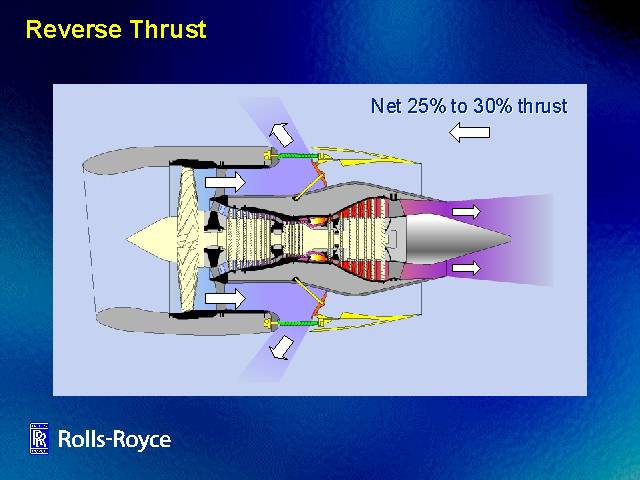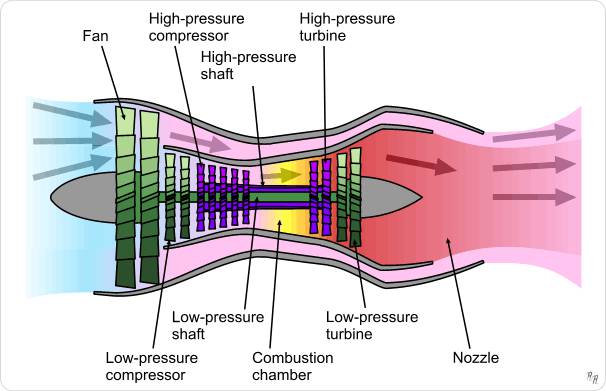How does it work? In a programme i was watching, it folds a big flap behind the engine which forces the thrust forward. Someone explain please
 14 Answers
14 AnswersIn reverse thrust, a the back of the engine cowling is pushed back and put together behind the engine, as if you were holding a huge bowl behind it, with the interior facing the engine.This then stops the thrust and diverts it forwards, thus greatly slowing down the airplane. It's only used right after touchdown.
More in depth ➡
Thanks for that tailhook!
I don't get it... the engine sucks in air, then shoots it back out again? I thought this would nullify the effect?
Air is forced forward as opposed to back....the thrust is reversed from normal operations.
What damage can occur if reverse thrust isn't disengaged at the required speed?
FOD (Foreign Object Damage)
The posibility for that to happen is greater at slower speeds.
Some aircraft can use reverse thrust to back themselves up also, ala MD80's. Also most turbo props also have reverse thrust.
Yeah, that's true, but it's not very good, because of the suction the engines creates when backing themselves up.
Well MD-80's do it quite regularly.
if a plane uses reverse thrust to push back, will it then suck in air, and shoot it back out again? Or do the blades rotate in a way which makes the air go out the other way? (I know this applies for turbo props, but I am refering to jet engines)
Ok, I'm gonna explain this in a simple manner.


Picture taken from www.wikipedia.org
This picture shows clearly how reverse thrust works. This is for a turbofan jet engine. A characteristic of a turbofan jet engine is that there is a primary and secondary airflow. The primary airflow is shown by the first horizontal arrow and the secondary airflow is shown by the airflow under the primary.
Air passes through the fan and goes to the low pressure compressor and also to the exhaust (by the primary airflow) The secondary airflow is the one that passes through the low pressure compressor, then to the high pressure compressor and all the way to the exhaust. The engine has this shape to create a venturi.
Now, when the reverse thrust is opened, there is a valve, which has the function to close the primary airflow so this airflow escapes to the outside. This is exactly what makes the aircraft slow down. While this is happening, the secondary airflow passes through all the engine and escapes at the exhaust. When the reverse thrust is activated the blades keep moving in the direction they were moving before. They don't rotate in they other way.
FWIW, I heard in a safety class that no twin-engine jet aircraft has ever survived an inadvertant inflight thrust reversal, while no multi-engine jet aircraft with three or more engines has ever been lost to one.
Thrust reversal at less than 60 knots causing damage is a fabrication of FSPax. As stated, it is common to reverse aircraft using the engines. The FAA has banned reversing an aircraft using the engines in snow or ice storms due to two 737's throwing large chunks of ice forward, which were then ingested, at Washington Ronald Reagan INTL airport on seperate, but similar occurences, resulting in the loss of both aircraft shortly after take-off.
In dry conditions, there is no law against the reversal of engines at any speed.
Nice string, everything you wanted to know in one spot.
If the question and answers provided above do not answer your specific question - why not ask a new question of your own? Our community and flight simulator experts will provided a dedicated and unique answer to your flight sim question. And, you don't even need to register to post your question!
Be sure to search for your question from existing posted questions before asking a new question as your question may already exist from another user. If you're sure your question is unique and hasn't been asked before, consider asking a new question.
Flight Sim Questions that are closely related to this...